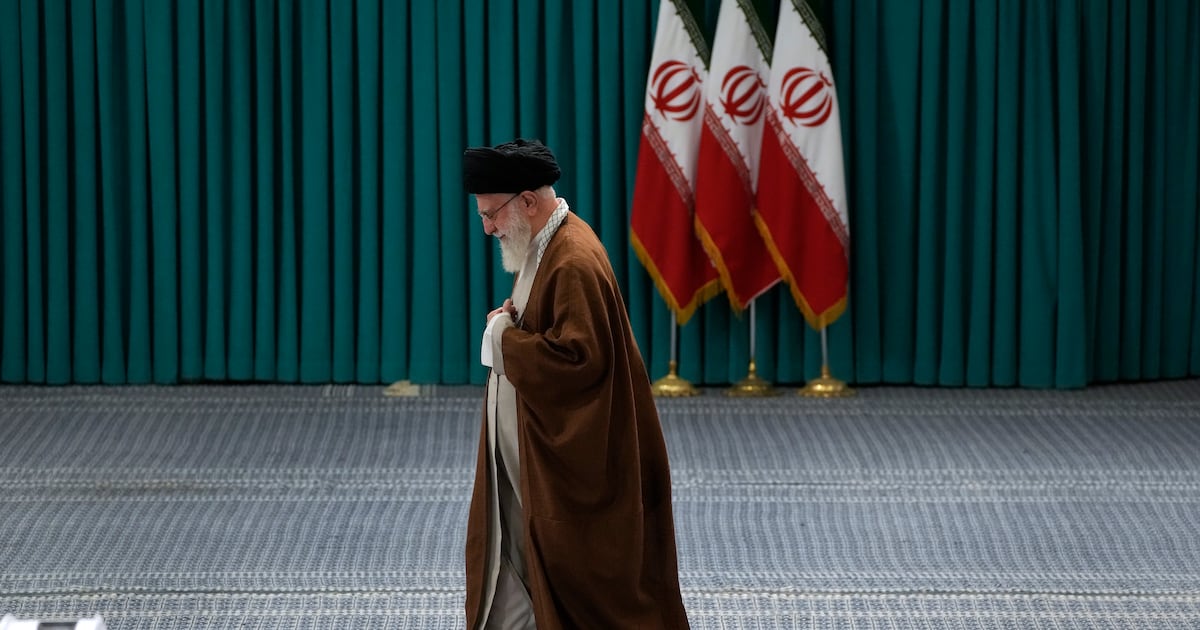Tension is escalating between the U.S. and Iran over its nuclear ambitions.
On Tuesday, President Donald Trump signed an executive order to sanction Iran over their development of nuclear weapons and their exporting terrorism through proxy groups.
Iranian Supreme Leader Ali Hosseini Khamenei reacted during a meeting with Iranian armed forces officials, and pieces of his remarks were posted to X in a series of statements against the U.S. on Friday.
“The US gives opinions about us and issues threats. If they threaten us, we will threaten them,” he wrote in one post.
While the rhetoric between the two countries ratchets up, Trump said, as he was signing the executive order, that he was hopeful it would be unnecessary.
“We will see whether or not we can arrange or work out a deal with Iran,” he said, adding, the order is a “very powerful document, but hopefully we’re not going to have to use it.”
Trump says he’s left instructions if he is assassinated by Iran
In the Oval Office, a reporter asked Trump what would happen if Iran retaliated by “killing” him or someone on his team.
“That would be a terrible thing for them to do — not because of me. If they did that, they would be obliterated,” Trump responded.
He continued, “That would be the end. I’ve left instructions. If they do it, they get obliterated. There won’t be anything left.” If an assassination happened to a leader or someone close to a leader, “you would call for total obliteration of a state that did it.”
Although Trump said he’s “unhappy” to sign the order, “I really have not so much choice because we have to be strong and firm.”
Coming executive action will likely add back a block on the sale of Iranian oil to other countries in an attempt to limit Iran’s ability to get a nuclear weapon. “They cannot have a nuclear weapon. For me, it’s very simple. Iran cannot have a nuclear weapon,” Trump said.
How close is Iran to getting a nuclear missile?
In late December, Iran Watch reported that the country would have enough enriched uranium for five nuclear weapons by the new year.
However, this report claimed Iran is still lacking other materials. Fully functional nuclear weapons “could take anywhere from several months to a year or more, although the timeframe is uncertain.”
Iran Watch added that production done on a “laboratory scale” make it difficult to track the country’s progress.
A brief history of U.S. and Iran nuclear agreements
The very first nuclear agreement between the two countries came in 1957 with the Atoms for Peace program. This program gave Iran resources to aid their development of nuclear technology for “peaceful purposes.” The program lasted until the 1979 Iranian Revolution.
The revolution in Iran increased tensions with the U.S. drastically from 1979 to 1981, after 52 Americans were held hostage for 444 days. Jimmy Carter imposed the first sanctions against Iran during this era, and the hostages were released after Ronald Reagan took office.
Then in 1995, Bill Clinton imposed economic sanctions on Iran for banning U.S. trade, and George W. Bush followed suit, imposing sanctions to prevent the country from developing nuclear weapons in 2006.
Then in 2015, Obama offered Iran billions of dollars in sanctions relief in exchange for the country agreeing to dismantle their nuclear weapon development facilities, per the Council on Foreign Relations. Critics of the deal said it didn’t do much to stop Iran’s nuclear ambitions.
In 2018, then-President Trump withdrew from Obama’s JCPOA deal, calling it “a horrible one-sided deal that should have never, ever been made,” per The New York Times.
Trump has said he plans on reimposing maximum sanctions on Iran that were partially lifted during the Biden administration.
